Tandem Tactics for Trout Part Two: Below The Surface
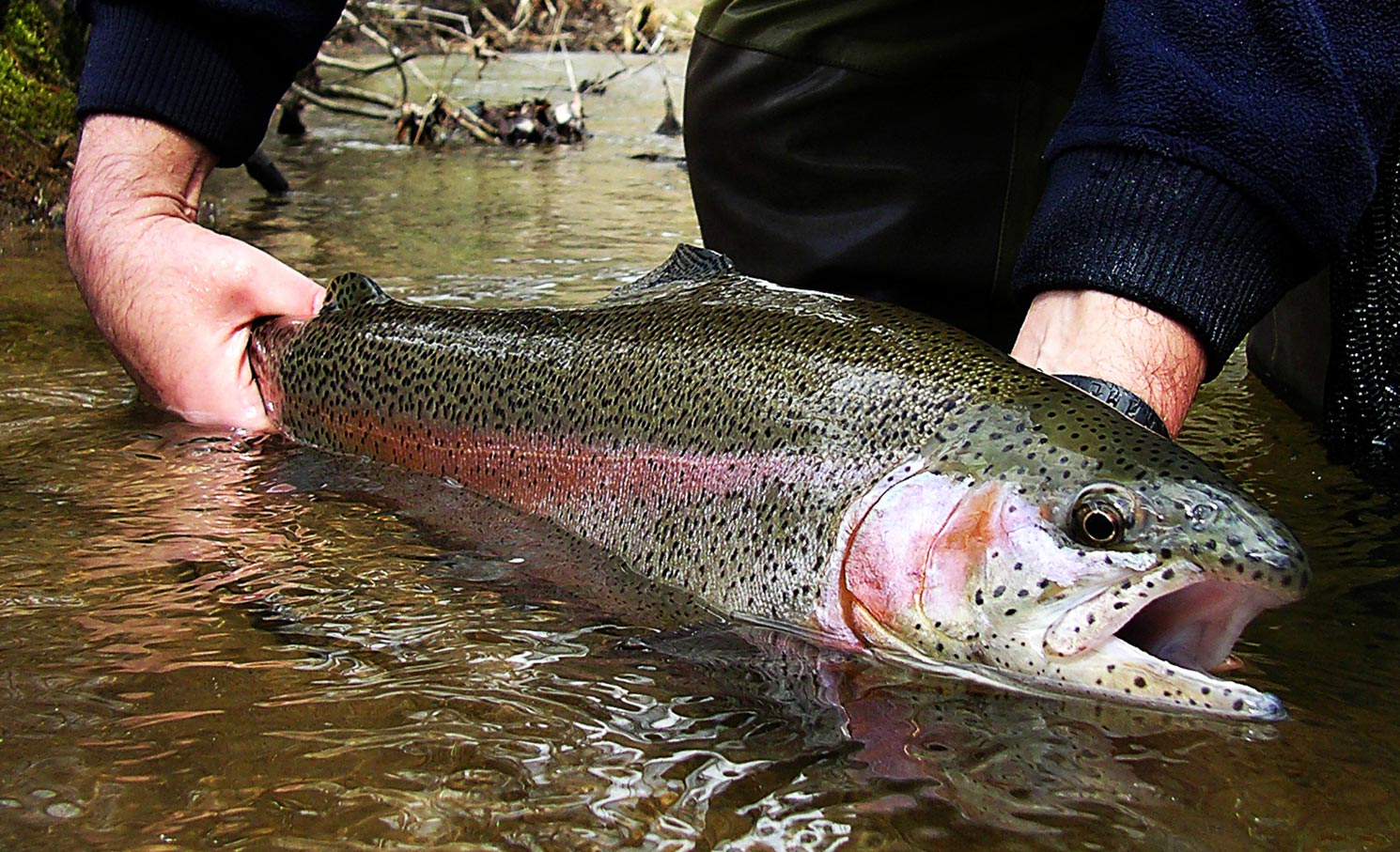
DRY DROPPER SET UPS ARE ONLY THE BEGINNING. SOME OF THE MOST EFFECTIVE TEAMS RUN DEEP.
Tandem nymph rigs are hands down the most effective way to catch trout. Let’s leave behind the aesthetic arguments about dry fly fishing for the minute, there’s a reason that all competitive trout fishing is done with teams of nymphs. It works and it will increase your numbers.
There are a host of ways you can choose to fish nymphs. I’m not going into the details of Czech Nymphing vs. French nymphing or Merican nymphing, but I will include some links at the end of this article. For now I’m going to focus on choosing and rigging nymphs that work effectively as teams.
Rigging
There are two common ways to rig tandem nymphs. The simplest and most commonly used for indicator set ups is to tie the dropper off the bend of your lead fly’s hook. Sixteen inches of tippet between the flies is a good average length. You might assume that the dropper would fish sixteen inches deeper than the lead, but that’s not the case. It all depends on the distribution of weight.
It is pretty common to fish a weighted lead fly with an unweighted dropper. This team will fish at about the same depth. This tactic offers the fish two choices at the same depth. If your goal is to fish different levels of the water column, you must use a weighted dropper or a split shot four inches or so above the dropper. An unweighted dropper with a split shot will have better action but is a little more maintenance and can compromise your tippet strength. The difference in depth between the two flies will only be about half the length of the tippet which separates them so you may want to go longer than sixteen inches, depending on conditions.
This is the setup I use most commonly
Read More »Destination Fly Fishing On The Cheap
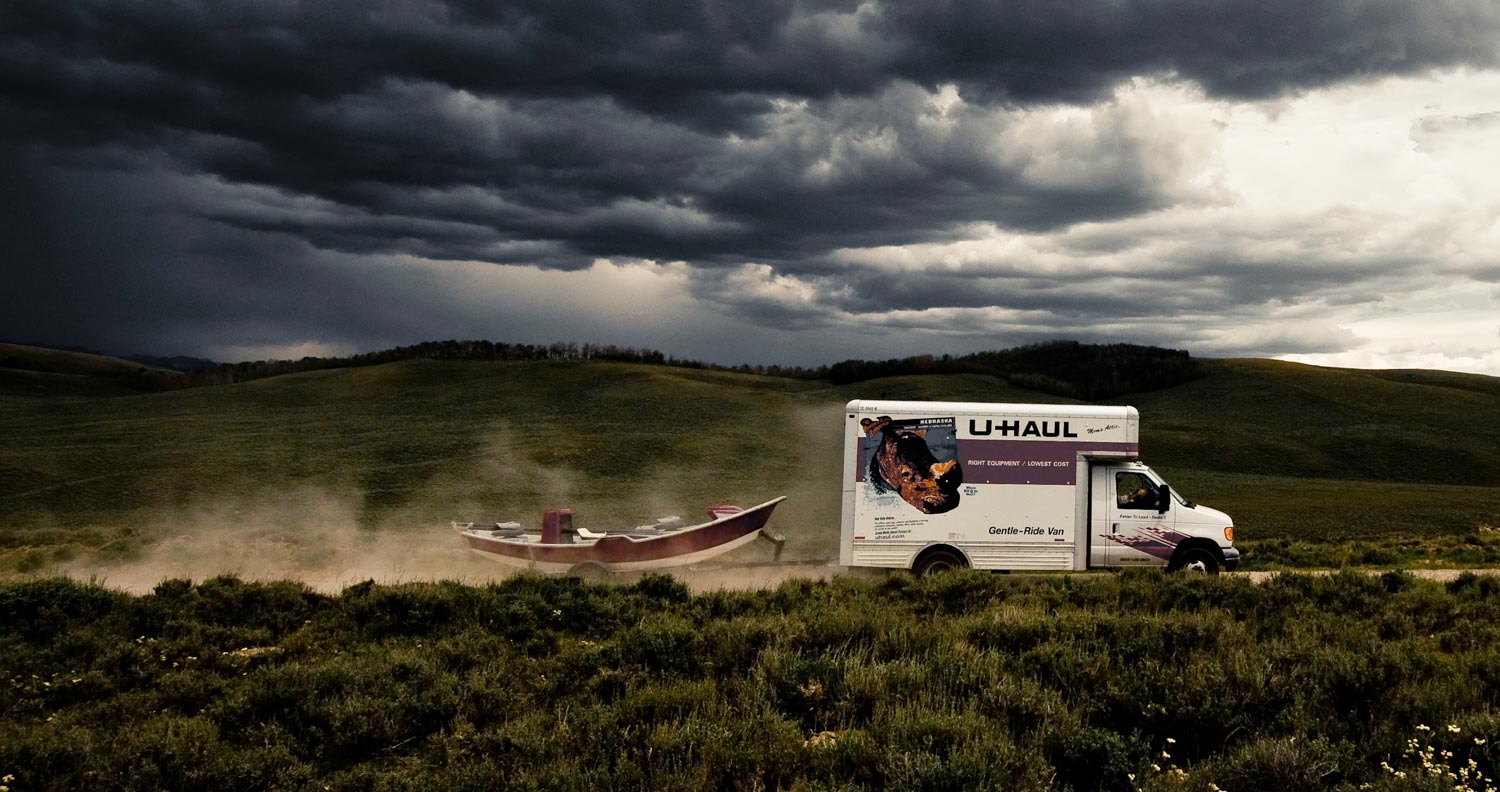
Everyone wants to fish like a rock star, but not everyone has the budget.
Fortunately you don’t have to have deep pockets to have big fly fishing adventures. While storied Atlantic salmon rivers and Christmas Island my stay off the list, there’s plenty of awesome fishing in reach and you can have a quality experience without spending a lot of money.
I’ve done a lot of budget fly fishing travel. While I get some really great fishing opportunities these days I’m still pretty frugal in how I take advantage of them. There’s not a lot of first class seats on the G&G tour bus. Over time, I’ve figured out how to stretch a dollar pretty far and how to maximize my chances of success.
Here are some tips for destination fly fishing on the cheap
Choosing a location
This is the cornerstone of a great fishing trip. Every decision and outcome depends on making a good choice of fishing location. There’s lots to think about, so take some time and make a solid choice. Here are a few things to think about when choosing a location.
The Experience
What kind of experience are you looking for? You could choose a total immersion like boat camping where you are on the water every minute, or you could travel to a new place with lots to offer culturally or things for the family to do while you’re fishing. There’s no wrong answer. What matters is that you come home feeling that your time and money were well spent. Know what you want and be careful where you compromise.
The Timing
Where you fish may depend on when you can go. Ideally you’ll be able to hit the location you choose when the fishing is at its absolute best, but there are plenty of variables. It might not be so fun to bang it out on a famous river during peak season, so you may choose to throw streamers after school back is in session rather than fish dry flies in a throng. You might, like I do, choose to go bone fishing in the winter to get away from the cold, knowing you might catch more fish in April when the weather is unbearably hot and there are clouds of horse flies. It may also be a matter of finding a place where the fishing is good the week you have time off. Do your research and know what to expect.
The Weather
Weather is always a source of stress when planning a fishing trip.
The Trifecta For Fishing Solitude
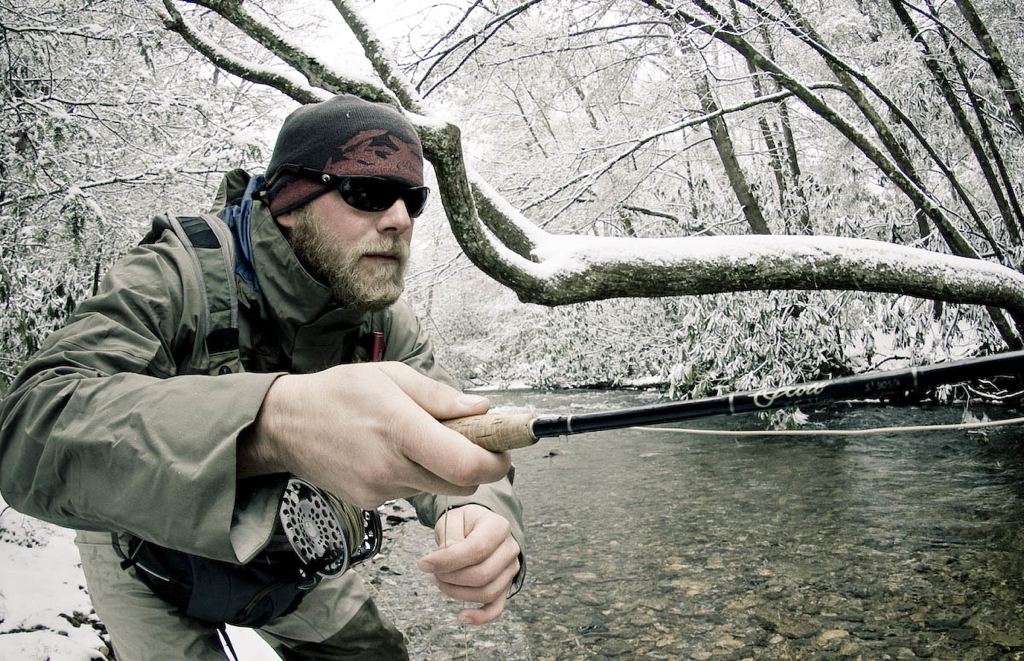
It seems like every year it gets harder and harder for me to find complete solitude on the river.
Solitude is not a necessity for me by any means, but when I’m blessed with it, I find it does wonders for purifying my soul and improving my fishing game. Time seems to stand still when I’m in complete solitude on the water. Every fish I land with no one there to confirm it but me, seems to add further reward and satisfaction. There’s no competition from other anglers, it’s just me and the fish. This allows me to open my mind, think clearly, and get in a zone to fish at my best ability. I don’t care what pace I’m fishing or how much water I cover while I’m out. I just take one fish at a time, like I’m challenging each of them to a game of chess. But to be frank, it’s not even about winning or losing. It’s more about taking in the big picture and understanding why I’m out there in the first place; I love to fly fish.
Over the years I’ve developed a betting strategy I call the “Trifecta for Fishing Solitude”. Although gambling never offers us sure win bets, searching out and placing these three bets in order when possible, usually pays out plenty of solitude on the water.
Bet #1. Fish off the beatin path
Being lazy and choosing to fish water that’s easily accessible generally will bring you company instead of solitude in your fishing. Hiking into difficult terrain is great but you don’t always have to go that far. Sometimes all you have to do is
The Double Figure 8 Loop knot
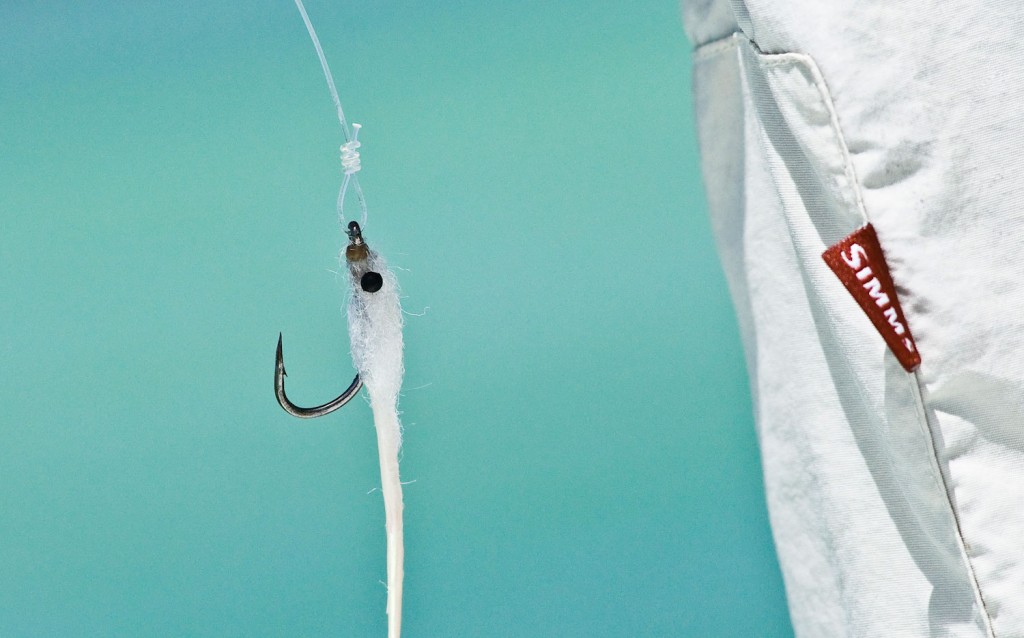
Loop knots give your fly superior action in the water.
There are several good options for creating a loop knot but tied in heavy salt water tippet, like you use for tarpon, most get quite bulky. In the first of three videos on better salt water knots, Capt. Joel Dickey shows us how to tie the Double Figure 8 Loop Knot. An excellent choice for strength, size and action.
WATCH THE VIDEO AND LEARN TO TIE THE DOUBLE FIGURE 8 LOOP KNOT!
Read More »Dickey’s Mighty Mantis
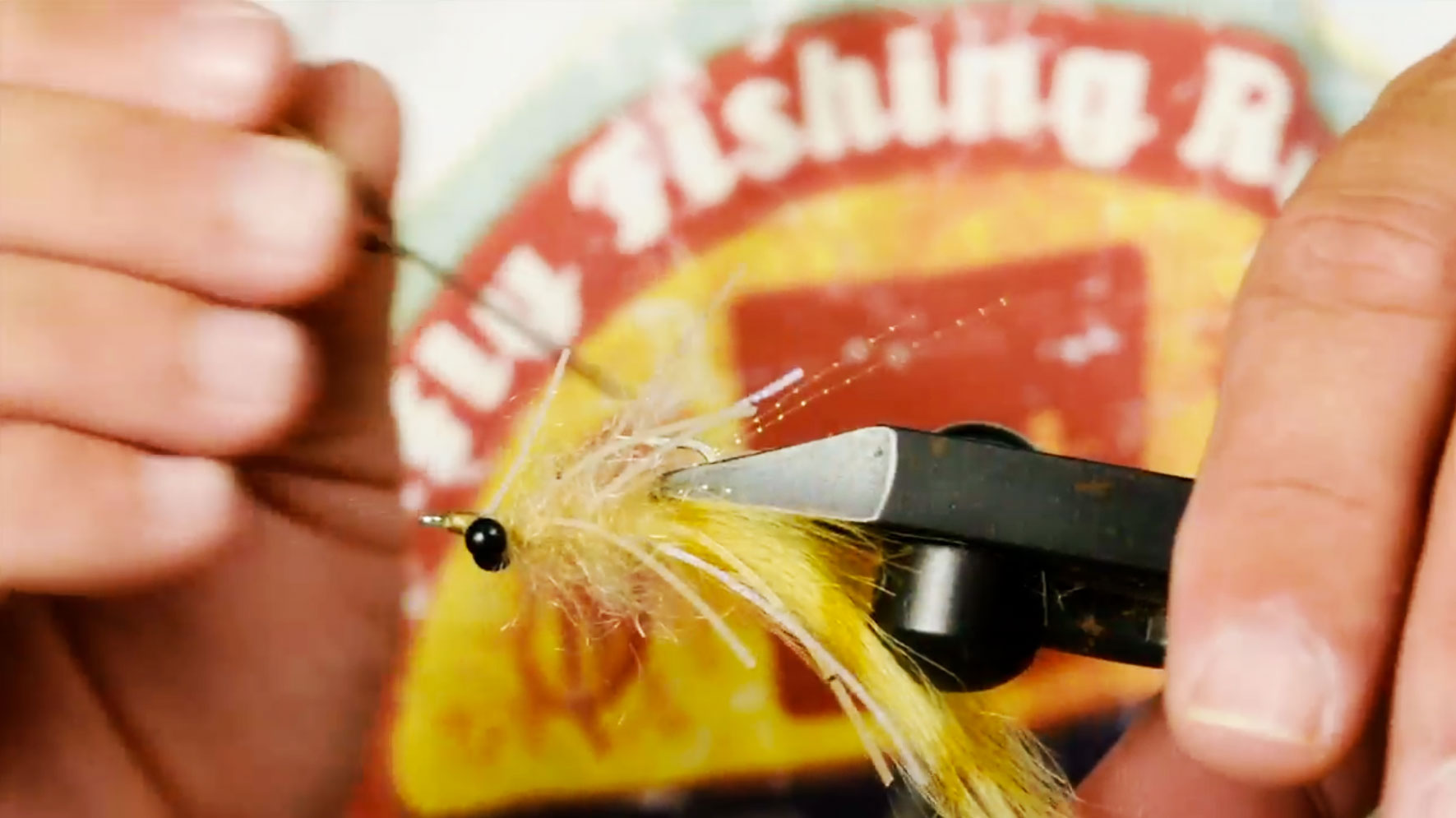
I WAS, FRANKLY, A LITTLE SHOCKED WHEN JOEL DICKEY DECIDED TO SHARE THIS FLY WITH US.
I have fished Joel’s Mighty Mantis for years and I can attest to its mojo. Friends, this fly works. It’s the most productive bonefish fly I have ever fished and we’re proud to have it on the site.
The mantis shrimp is a leggy little critter found in most all tropical waters. It’s apparently quite tasty because bonefish inhale them with reckless abandon. The pile of rubber legs and teased out hairdo on this fly make for a lifelike silhouette that bonefish can’t resist.
Watch the video and tie up some Mighty Mantis for your next bonefish trip!
Read More »Presenting Your Fly to Migrating Tarpon
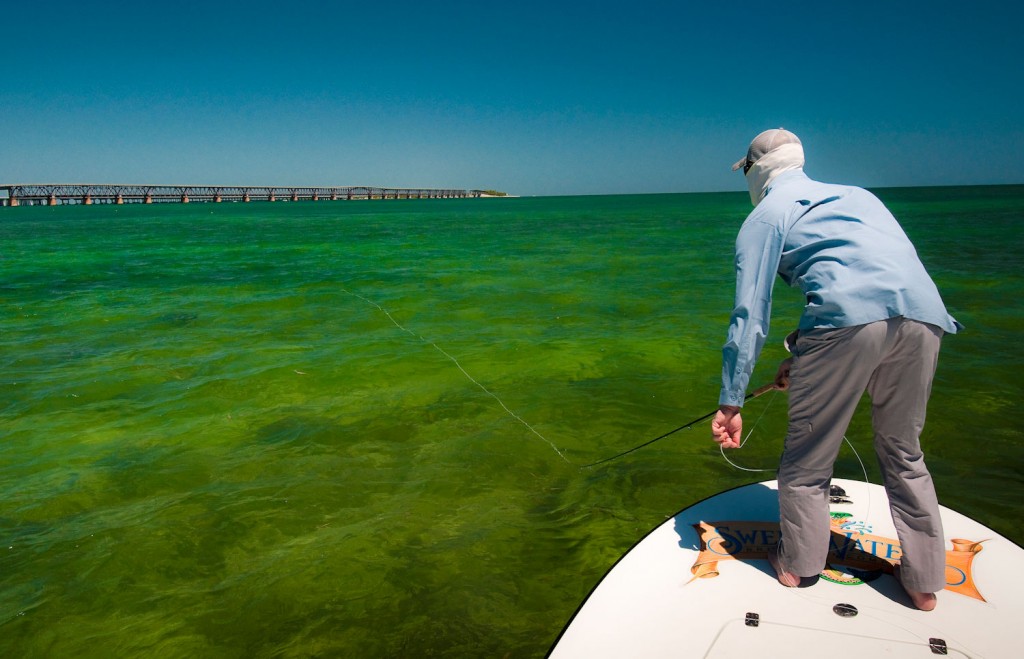
There’s definitely some strategy involved in tarpon fishing.
Migrating tarpon offer the fly angler a great opportunity for a close in counter with the silver king, but you have to play your cards right. Many anglers have watched big schools of tarpon vanish right before their eyes, leaving them to shrug and ask, “what’d I do?”
Often there is nothing wrong with the fly,or the cast, except that it was shown to the wrong fish. Migrating tarpon play a curious game of “follow the leader.” when you see that school coming its tempting to lose your patience and cast to that big lead fish, but that’s not the way to go.
That lead fish is out there on her own, blazing the trail for the whole school. She’s wary and quite cautious, that’s her job. Almost anything will spook her and the school will follow her lead. Her followers however are a different story. Generally male, they are focused almost completely on her. Sound familiar guys? Ever made a bad decision while you were focused on a female?
Those males feel secure because the lead fish is their lookout. If she isn’t spooked they feel like everything is as it should be and if a careless bit of food gets past her they have no problem scarfing it down. Those are the fish you want to target. It’s possible to get many shots at a school of tarpon as long as the lead fish keeps her cool and the more shots you get, the better your chance at a hookup.
CHECK OUT THE VIDEO AND OUR BUDDY JOEL DICKEY WILL SHOW YOU THE BEST PRESENTATION FOR A MIGRATING SCHOOL.
Read More »Reach, Don’t Rip!
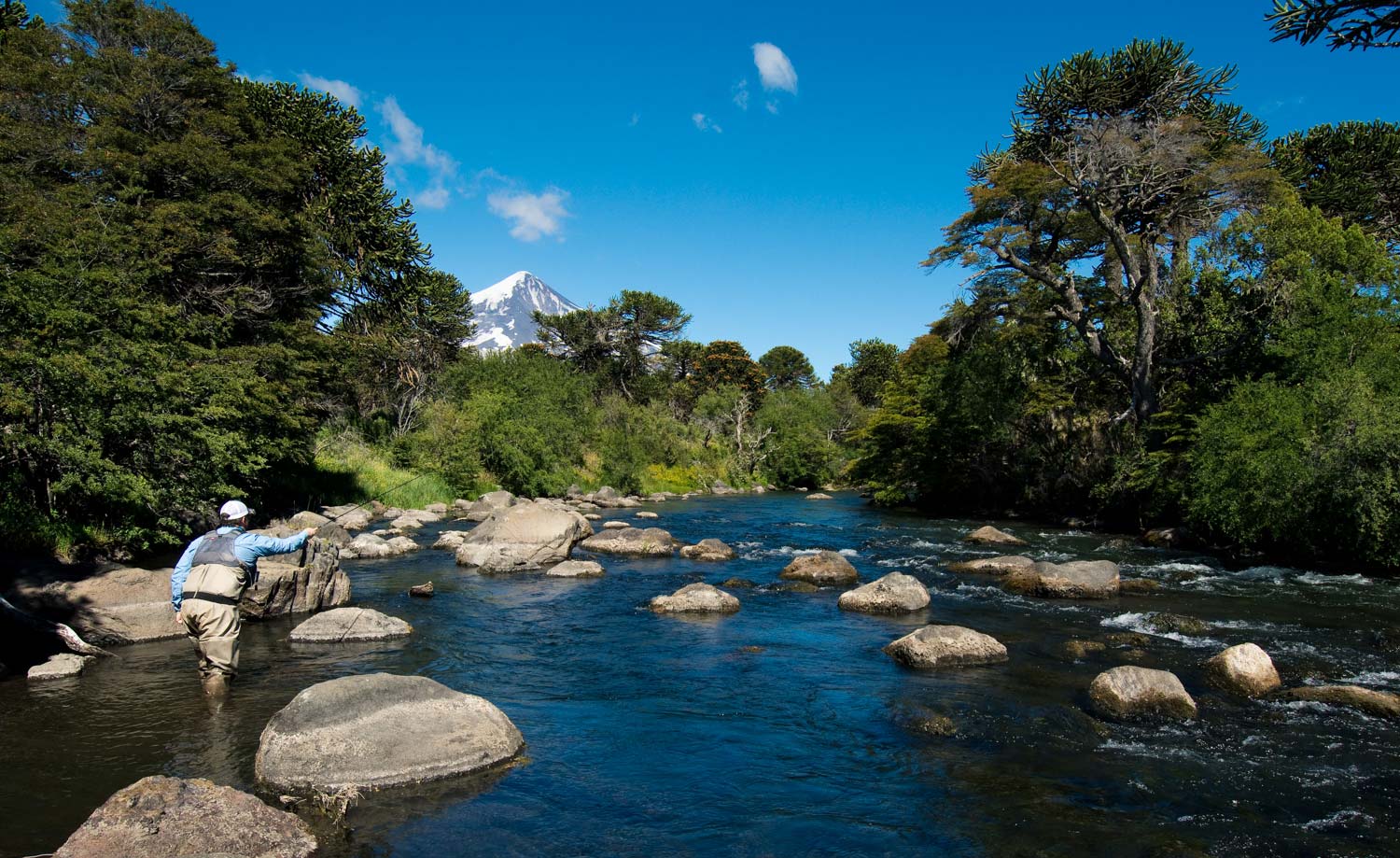
One of the most common areas of needed improvement that I see with many anglers is line management.
In fly fishing, line management is a big piece of the puzzle, and to be consistently successful you must improve upon these skills and develop good habits. One particularly bad habit that I see more than any other when I’m on the water with clients and other anglers is having an unnecessary amount of line stripped off the reel. This is problematic for numerous reasons.
One obvious reason is that your fly line could become entangled while fighting a fish and cause you to lose a fish. Laying a ton of line on the ground invites a host of gremlins to grab on and ruin your efforts. Most trout lines are also very supple and thin, making them even more prone to tangle and knot up when being taken from the ground quickly, whether it be a fish on the run or from the act of shooting line. Fly line left on the ground, or even in the water, also lends itself to damage. You can easily shred a fly line and even cut through a line by stepping on it. I’ve had one of my lines severed in half when a client of mine wearing aluminum barred boots stepped on it, leaving that rig useless until we stopped to grab another reel. Dirt and grime also loves to stick to fly lines, especially textured lines, which will greatly hinder your fly line’s ability to float effectively on the water’s surface. Problems, problems, problems.
Often, a situation doesn’t call for more fly line, but rather for the angler to get out of their “box”.
For example, there was a morning I was setting up a client to make the first presentation of the day, which required about a thirty-foot cast. Nothing crazy. As he set his feet and prepared for his cast, I turned to pull my net from my pack in an act of optimism. As I did this all I could hear was the sound of the intermittent outgoing clicks of the drag on his reel. A lot of them. When I turned back to him,
Read More »Fly Fishing Provides Great Health Benefits
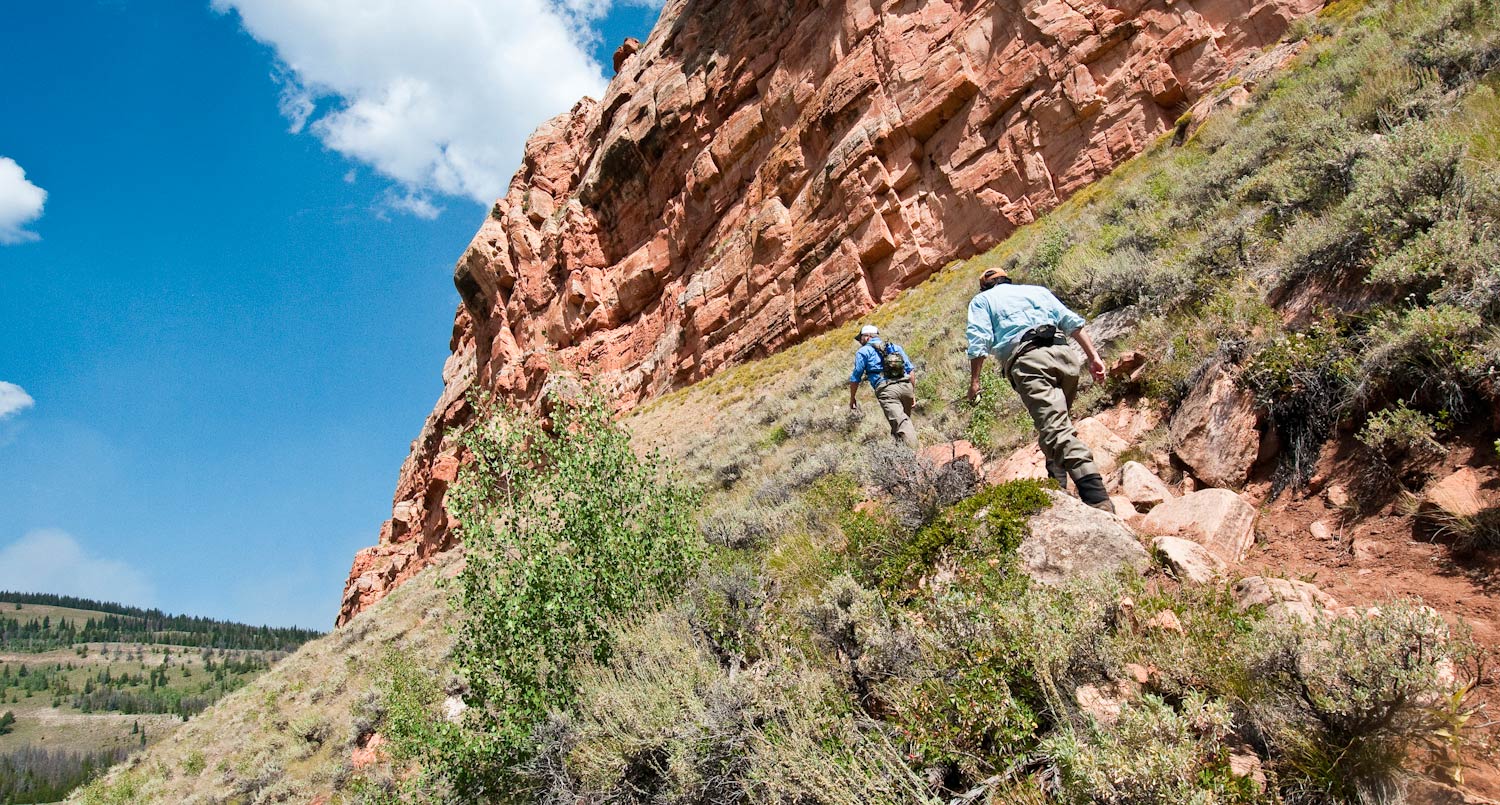
I tell my clients, all the time, that I’m grateful for all the benefits fly fishing provides anglers.
It provides us with one of the funnest ways to exercise, and it has the ability to completely wash away the stress of everyday life, from its therapeutic entertainment. We really should be thankful that this passion of ours provides us with so much more than just the reward of catching fish. Each and everyday we fly fish, we should take a minute to sit back and reflect on this fact. What other exercise activity can you think of that allows you to burn tons of calories during the day, and not have the faintest clue your even working out? Most of us aren’t extreme athletes, and even if we were back in the day, many of us have gotten older and are no longer. The great thing about fly fishing is you can tailor it to your own abilities and needs. It’s a great activity for maintaining your long term balance, dexterity and muscle strength, and it does a very good job of keeping your brain sharp.
I really think we could boost the growth of the fly fishing industry if more people were writing about all the great health benefits it provides, both mentally and physically? I’d love to see Yahoo, or one of those other giant headline news websites (that most of us visit daily) post on its home page, a fly fishing picture with the headline, “Lose 15 pounds and have a blast doing it.” We need to start thinking outside the box to promote and attract newcomers to fly fishing, and I think this could be one area most of us have been overlooking.
Lock your forceps
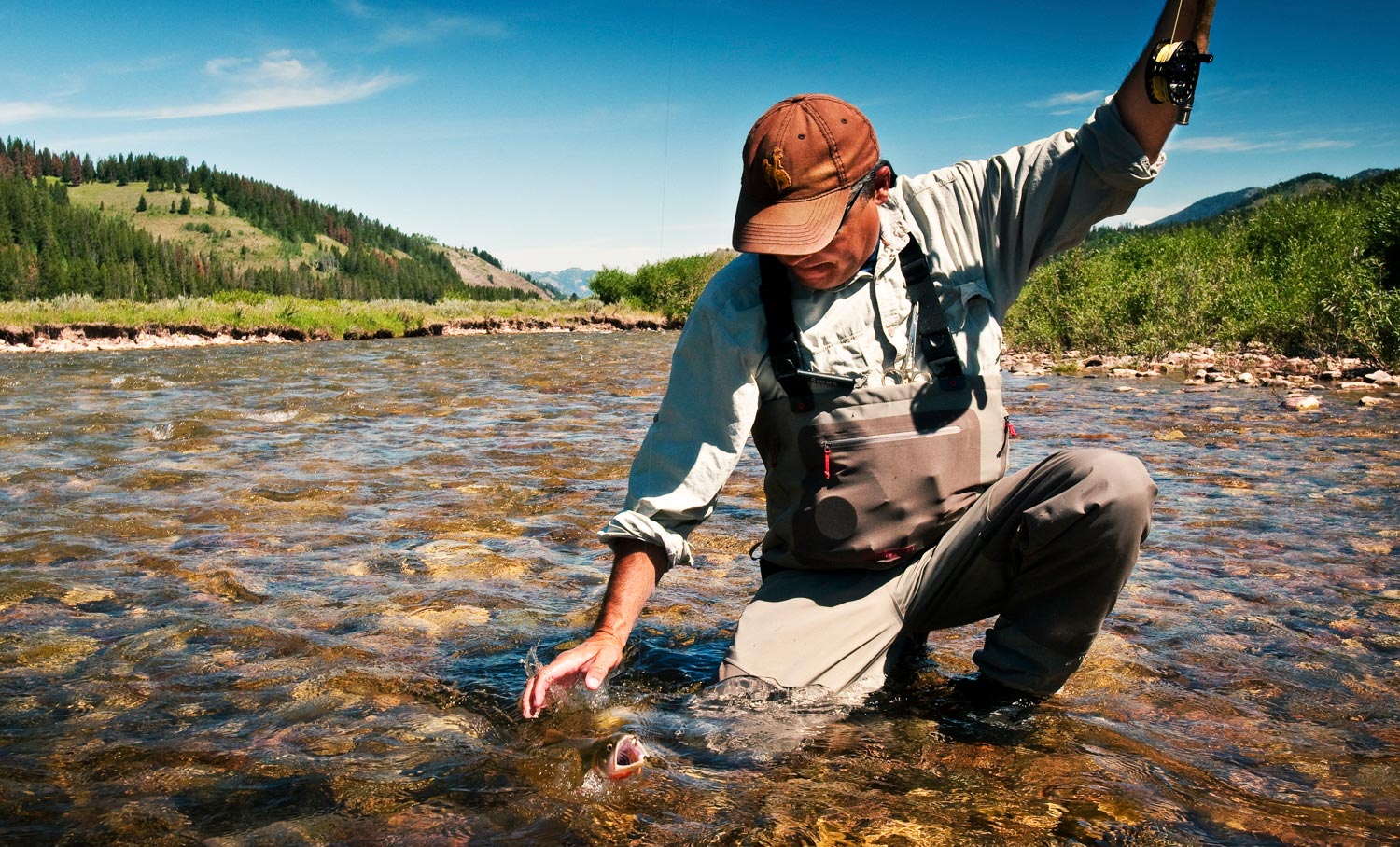
By Dan Frasier
For all you flats guys and bank fishermen out there.
Landing, unhooking, wrangling, getting a picture, and releasing a fish can all turn into a giant goat rodeo. Nothing makes it worse than having a bare hook connected to a nearly invisible line which is tied to your very expensive rod; flailing about. One trick I love is to use my forceps to unhook the fish, and then lock them onto
Read More »What is Recovery Rate and How Does It Affect Fly-Rod Action?
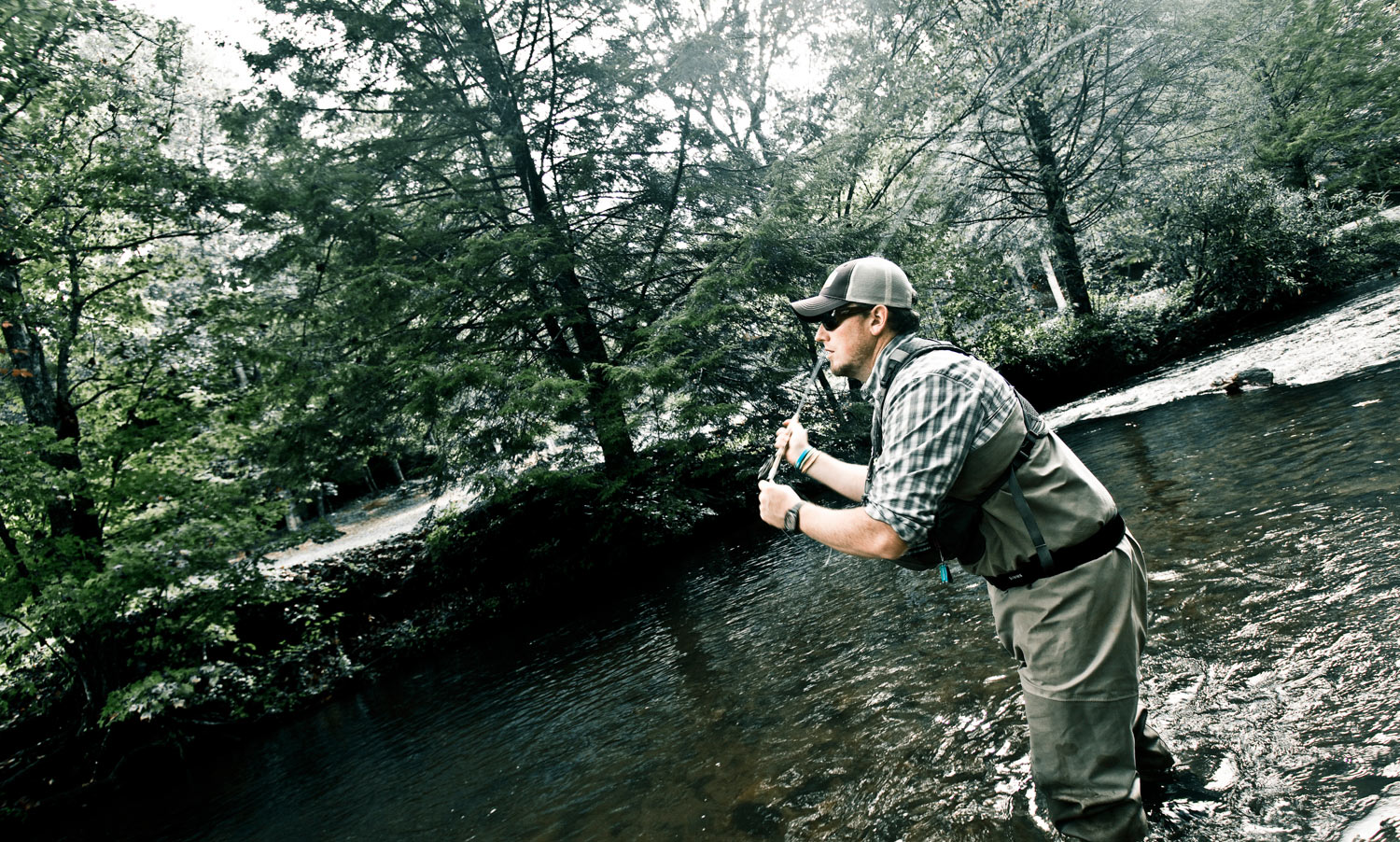
When we refer to a fly-rod as being fast or slow, what we are talking about is recovery rate.
Recovery rate simply means how quickly does the bent rod return to its natural, straight position. This recovery rate is inherent to the rod and can be observed whether the rod is under a load, as in casting a fly line, or just getting a good wiggle at the fly shop. The wiggle, however, is not a good test of recovery rate and even casting a rod it can be hard to judge the recovery against another rod without being pretty thorough about it.
So how do you quantify the recovery rate of a fly rod?
One method which is informal but better than the wiggle, is to grip the rod in your hand and punch that hand into the palm of your other hand. This gives the rod a very positive stop and if you pay attention you can judge how long it takes for the rod to flex down and back up. It works but is still pretty unscientific.
Steve Greist of Sage showed me a very cool trick for judging recovery rate and I asked him to share it. Steve has a pretty unique job at Sage. He is a materials designer and a pretty impressive dude. His job is to create new ways of combining carbon fiber and resins to create new materials, and those materials, more than anything else, determine recovery rate. When you hear about Sage’s Konnetic technology, thats what they are talking about, Steve’s material. He works directly with the companies who produce the fibers and his lab produces materials which sometimes go on to be used by companies like Boeing.
So to judge the recovery rate of his material, Steve does something interesting. He drops it. He makes untapered blanks and drops them on a hard surface. The impact sets off a vibration in the blank. This vibration is transferred into the air as sound waves, just like a guitar string or wind chime. The higher the pitch, the faster the recovery rate. Simply brilliant.
So if you want to judge the recovery rate of a fly rod, try dropping a mid section on the counter top at the fly shop. I’m not suggesting you simply buy the rod that sounds best but you will gather some good information to help you decide.
Here’s a question for you to think about. What was I doing in the Materials Lab at Sage? You will be finding out soon.
WATCH, AND LISTEN, TO THIS VIDEO TO SEE STEVE GREIST PERFORM A RESONANCE TEST IN THE SAGE MATERIALS LAB.
Read More »